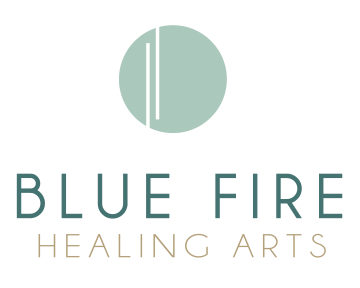What is a Scar?
A scar is fibrous connective tissue that patches up an area of skin or muscle that has been injured in some way either from a burn, cut, infection, or other damage. Scar tissue is the body’s way of healing after a trauma but it does not function quite as well as skin or muscle. However, scars do not have to be permanent. Connective tissue can be softened, broken down, changed, integrated, and healed.
Types of Scars

A keloid scar. This would be considered a yang scar in Chinese medicine.
From a Chinese medicine perspective scars can be yin or yang. Yin and yang are always relative, but in general a yin scar will be pale, sunken, and soft. A yang scar will be darker, raised, and more rigid. Some scars are a combination.
In Western physiology scars are categorized as keloid, hypertrophic, and contracture, and also acne scars. Keloid scars are raised above the skin and usually darker or redder than the skin tone. Hypertrophic scars are similar to keloids but not raised above the surface of the skin. Contracture scars can occur with burns and cause the skin and fascia to tighten which can affect muscles, nerves, and even organs. Acne scars are also common and appear as small pits in the skin.
Why Treat Scars?
Scars come in all shapes and sizes from small and barely noticeable to life-altering scar tissue that covers the body. If a scar is causing discomfort, pain, or dysfunction it is important to get scar therapies.
Any scar is on some level restricting the free flow of movement and function in the body (aka qi). Most of the time this will not impact quality of life, but larger, deeper, older scars can be a source of localized or radiating pain, restricted movement, and depending on the location and depth, interference with proper organ function.
Although often scars will fade with time, they also have a tendency to harden over time and continue to restrict the surrounding fascia without treatment.
The Goal of Scar Therapy
The goal of scar therapy is to return the scar to as much normalcy as possible in terms of appearance, movement, sensation, and function. It depends on the size, depth, and age of the scar, and the general health of the skin and the body. But therapeutic interventions can resolve pain and numbness in the area, help bring back movement in a joint, reduce the appearance of the scar, and make the scar itself more integrated and functional with the surrounding tissues.
Methods
Acupuncture

A yin scar from multiple surgeries on the lateral left leg. Acupuncture needles are surrounding the scar bringing about increased blood circulation and gently breaking up the scar tissue.
One acupuncture technique for scars is “surrounding the dragon” where needles are inserted all around the perimeter of the scar with the goal of bringing qi and blood circulation to the areas. This also serves to loosen the surrounding fascia and relieve radiating pain and tension.
A more assertive technique to to actually insert acupuncture needles underneath the scar to further break down the scar tissue.
Massage
 Massage will help soften scars and also free the restricted fascia surrounding the scar tissue. with consistent treatments. Touch itself is very important for healing the emotional trauma around scars. Part of the goal of scar therapy is to integrate the scar tissue with the surrounding area, the same goes for integrating the experience that caused the scar into our life to be able to move on..
Massage will help soften scars and also free the restricted fascia surrounding the scar tissue. with consistent treatments. Touch itself is very important for healing the emotional trauma around scars. Part of the goal of scar therapy is to integrate the scar tissue with the surrounding area, the same goes for integrating the experience that caused the scar into our life to be able to move on..
Cupping
Cupping can be used directly on the scar or around it to loosen the fascial layers and encourage circulation.
Gua sha
Gua sha may be used around or on the scar. My preferred method is to use a Japanese tool called a chokishin made of silver and do a spreading or gliding stroke over the scar to gently encourage circulation without aggressively trying to break up the scar. But it depends on the scar and what is needed.
Topicals
Vitamin E oil, or grapeseed oil which is high in vitamin E, are both helpful for scars. Castor oil softens hardened areas and masses and is useful for scars. Zheng Gu Shui is an herbal liniment formulated to help heal bones and tendons, but it is helpful for scars by increasing blood circulation and reducing pain.
Conclusion
Scars can heal and it is worth it to seek out simple therapies that can treat your scars and improve your quality of health and life.
